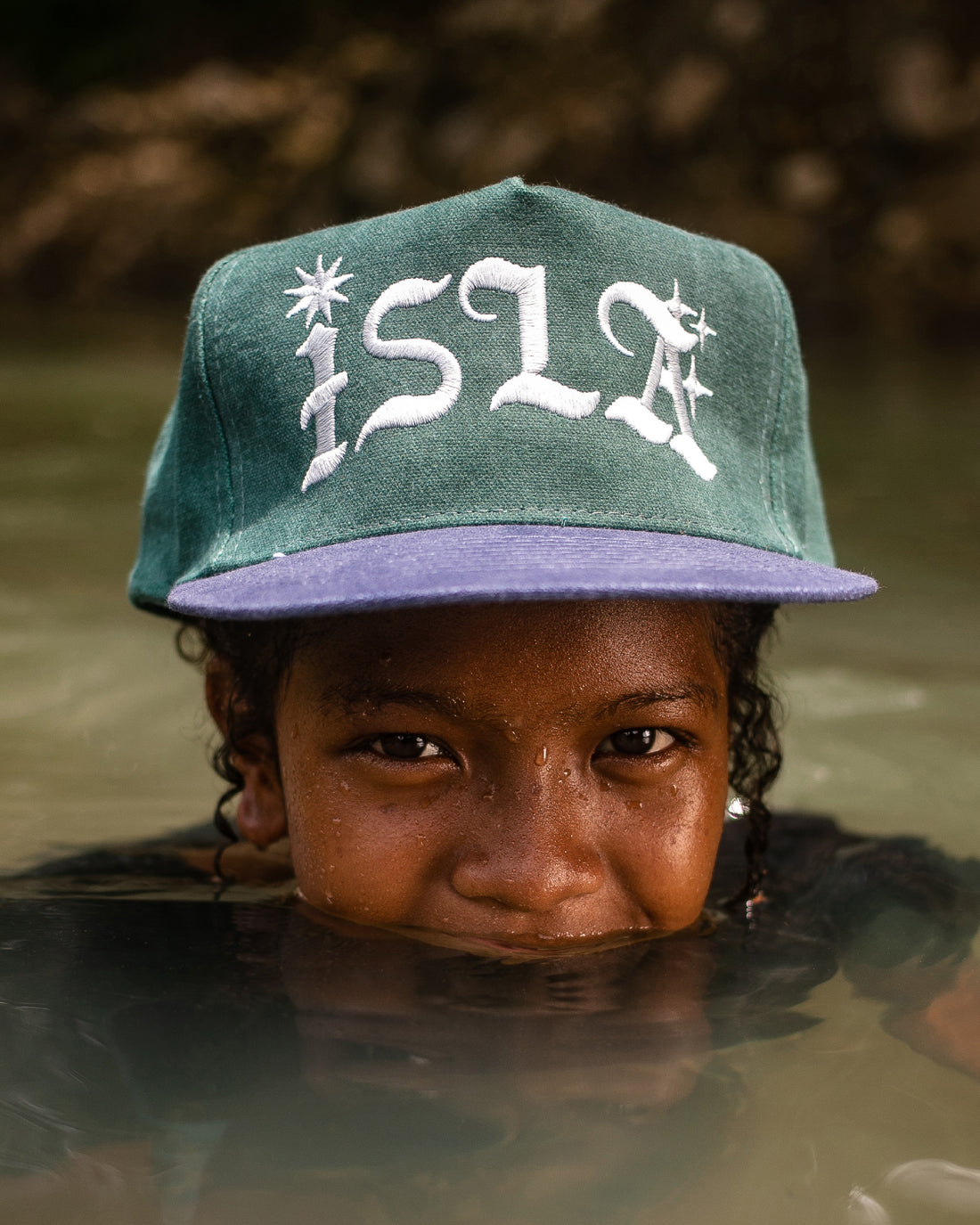A frequented collaborator and friend to our Tropa in-house pieces, we welcome Isla’s mainline to Tropa this December.
A product of a gritty Manila adolescence blended with the boldness of west coast style, the brand speaks beyond the realm of its products: a myriad of garments, imagery, and storytelling. With its compass of popularity slowly moving from LA to South East Asia, we at Tropa are opening our doors to the Isla holiday collection — punctuated by grounded colors and the line’s signature graphics. In introducing their collection, founder Pat Palacio alongside photographers Mac Villaluna and Stephen Ramiento join hands to take us through their experience with an Aeta community and its influence in rounding out the collection and their brand’s ethos altogether.




Read the exchange below:
Did you know anything about the tribe before trying to visit and photograph them?
* Stephen has been going back and forth in the village to go hiking and spend time with the natives. He has been taking photos and documenting the village and the surrounding nature. (Stephen is one of the day-one homies; he’s originally from Manila too, but he's been living in Pampanga now. He engages in a variety of activities, such as DJing, film photography, skating, and outdoor adventures.)
What concerns did you have before meeting the tribe?
* Nothing much, actually. We went there for the project, but our main focus was the adventure and the experience of connecting with them. If anything, I suppose it's whether they would be open to us styling them and taking their photographs.
How did you manage to connect with them and allow them to be photographed?
* When we arrived in the village, we went on a short hike to the river, where many of the villagers were hanging out. Children were swimming and jumping off rocks into the river, some were washing their clothes by the river, others were cooking by the fire they had made near the rocks, and carabaos were roaming freely. We joined them, had conversations, and hung out for a while. Before asking for permission to take their photographs, we met with the chieftain. She was well aware of how people from outside their tribe could take advantage of and exploit them, so we had to clearly explain our intentions for conducting the photoshoot.
You mentioned earlier to me that you guys weren’t sure anyone would be ok to be photograph for a couple hours until this little girl invited you over to her village?
* Yeah, while hanging out with them by the river for about two hours, we asked two of the kids if we could take their portraits, but they said they were shy. Then Jaezel (not sure how to spell her name right), the girl in the photos wearing the hat in the river and the hoodie with shades, offered to take us to her house to meet her grandmother, who is the chieftain.
She told us that maybe we could take their photos there. All credits to her for making the photoshoot happen! What differences did you see from the kids in the city?
* The kids in the tribe find greater joy and appreciation in the simple things they have. Spending their days playing and being in the midst of nature is a privilege that city kids often do not experience. While kids in the city may be surrounded by modern conveniences, the kids in the tribe cherish the beauty of their natural surroundings and the freedom to immerse themselves in the outdoors, fostering a unique sense of connection with their environment.
Would you go back again and why?
* We will certainly return to provide more supplies such as rice, clothing, and tsinelas for the children.
What would you have done differently?
* I wish we brought more clothes for the kids, they love the graphic t-shirts and hats.
How would you describe the personal style of the kids you photographed?
* We’re actually surprised that they have this swagger that you can tell they were influenced by hip hop, they were wearing thick chains and have tattoos on their bodies, they even knew how to pose for the photos that we didn’t need to direct them, they were natural.
Are indigenous people misunderstood in the Philippines?
* I believe they are more forgotten than misunderstood. To be misunderstood, one must first be acknowledged, at least to some extent.
As a Filipino clothing brand how does Islas play a role in addressing these misunderstandings?
* One of our core mantras is 'Focus on the tribe.' It serves as a constant reminder for us to stay rooted in what we represent and to pay our respects to the indigenous tribes in our motherland. We also aspire to inspire other local brands in the Philippines to embrace and champion our unique culture and tell our own stories, rather than imitating Japanese or Western brands. As brands, what we stand for will always be more important than what we sell.



Shop the collection online here.

